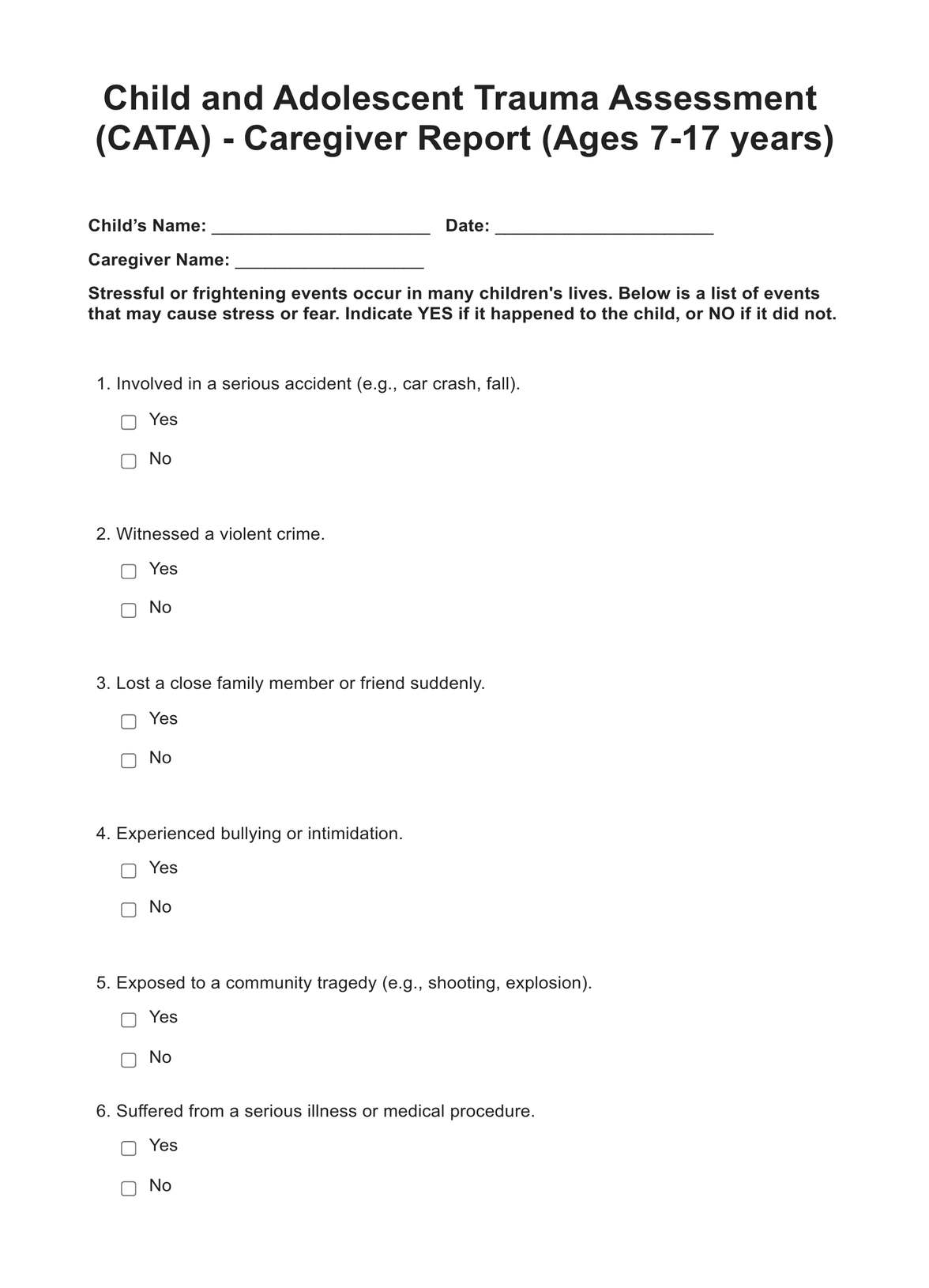The CATS Screen-Caregiver Report (Ages 7-17 years) takes approximately 15-20 minutes.

Child and Adolescent Trauma Screen (CATS) - Caregiver Report (Ages 7-17 years)
Explore the Child and Adolescent Trauma Screen (CATS) - Caregiver Report (Ages 7-17 years) to effectively assess trauma symptoms in children.
Use Template
Child and Adolescent Trauma Screen (CATS) - Caregiver Report (Ages 7-17 years) Template
Commonly asked questions
The findings are interpreted based on the provided scoring guidelines, with higher scores often indicating more severe symptoms.
The CATS Screen-Caregiver Report (Ages 7-17 years) is used when assessing trauma symptoms in children aged 7-17 or as part of a comprehensive mental health evaluation.
EHR and practice management software
Get started for free
*No credit card required
Free
$0/usd
Unlimited clients
Telehealth
1GB of storage
Client portal text
Automated billing and online payments











